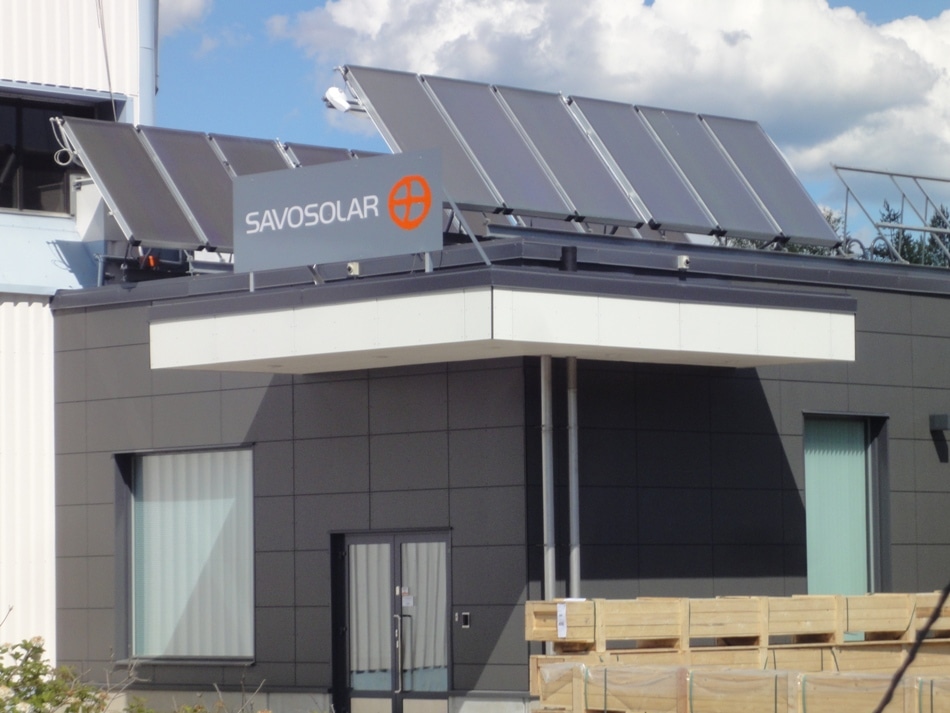Mar 14 2017
Demand and the need for cooling are growing as the effects of climate change intensify. VTT Technical Research Centre of Finland and German company ZAE Bayern have built an emission-free, solar-powered chiller; a pilot system has been tested in Finland and Germany. The potential market is world-wide, particularly in warm countries.
 Solar collectors on the roof of the building. (Credit: VTT Technical Research Centre of Finland)
Solar collectors on the roof of the building. (Credit: VTT Technical Research Centre of Finland)
The production and consumption of solar cooling are simultaneous. A property's cooling needs are highest when the sun is shining.
VTT and German company ZAE Bayern have developed a solar-powered 10 kW chiller. This absorption chiller works in the same way as the gas refrigerators used in Finnish holiday cabins, for example. But in this case, a solar thermal collector is used instead of gas. The method requires electricity for the flow pumps only. If necessary, the chiller can also serve as a heat pump.
The results of the project showed that – to be used as a heating pump as well – an economically viable and competitive, solar-powered absorption chiller would need to be 50 kW or bigger.
Finnish company Savo-Solar Plc participated in both the planning phase and the practical tests. As a result, the company's head office was successfully cooled using the pilot system built for the project. Savo-Solar and ZAE Bayern aim to develop a commercial product which enables users to cut their electricity bills through cooling with absolutely no need for electricity. This would also reduce emissions.
The chiller was tested as an air-conditioner for Savo-Solar's office during the summer and for heating it during the winter. Solar collectors on the roof of the building were used to collect the required energy. If the collectors did not produce enough energy during, say, the winter, or on a cloudy day, a heat pump served as a substitute energy source. Other possible energy sources would be district heating, biofuel boilers or industrial process heat.
Examples of large, megawatt-class absorption chillers based on district heating can already be found in Helsinki and Turku in Finland.
Another practical test was performed using an absorption chiller based on a bio-boiler in ZAE Bayern's laboratory in Munich, Germany. This system can also be supplemented with solar energy.
Publication: Solar heating and cooling in Northern and Central Europe http://www.vtt.fi/inf/pdf/technology/2017/T287.pdf
The project began in October 2013 and ended at the turn of the year. It was funded by: Savo-Solar Plc, Tekes - the Finnish Funding Agency for Innovation, and the German Federal Ministry of Economics and Technology (BMWi).